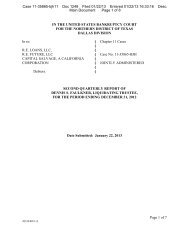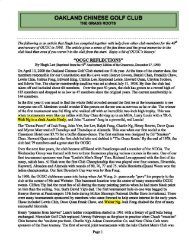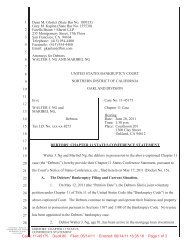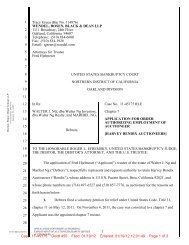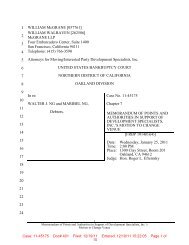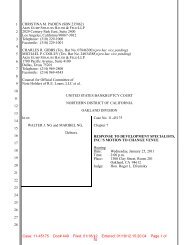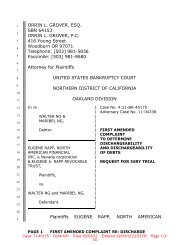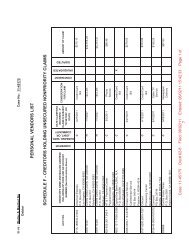Class Plaintiff's Response to Automatic Stay - equitatus
Class Plaintiff's Response to Automatic Stay - equitatus
Class Plaintiff's Response to Automatic Stay - equitatus
You also want an ePaper? Increase the reach of your titles
YUMPU automatically turns print PDFs into web optimized ePapers that Google loves.
Case 11-03620-bjh Doc 40 Filed 02/21/12 Entered 02/21/12 23:34:41 Desc Main<br />
Document Page 11 of 34<br />
R.E. Loans, Inc. and B-4 Partners LLC, as Borrowers and Wells Fargo Foothill, LLC, as Lender<br />
("Loan Agreement") § 11.3 [In re RE Loans, case no. 11-35865, Docket No. 35].<br />
17. There was a problem in that RE Loans’ operating agreement neither authorized borrowing<br />
from institutional lenders like Wells Fargo nor permitted the Managers <strong>to</strong> assign or pledge RE Loans’<br />
assets as security for third-party borrowings. CC 10, 66. The Managers had repeatedly promised<br />
the members that RE Loans would not raise cash from institutional lenders. Id. 67-68. To<br />
circumvent this problem, Greenberg and Wells Fargo consummated the loan in secret, with approval<br />
from the members <strong>to</strong> be obtained afterward. Id. 11, 73.<br />
18. A scheme was designed <strong>to</strong> secretly fix RE Loans’ securities problems, obtain cash <strong>to</strong> make<br />
RE Loans appear liquid, and ensure that Wells Fargo’s security interest was primary. CC 11-12,<br />
62-91, 96. The plan involved: (1) secretly obtaining the line of credit loan from Wells Fargo; (2)<br />
orchestrating a process <strong>to</strong> get RE Loans’ members <strong>to</strong> approve the loan after-the-fact and surrender<br />
their equity interests for promissory notes with security interests subordinate <strong>to</strong> Wells Fargo’s; and<br />
(3) establishing a mechanism for repaying the loan. Id. The RE Loans members did not know about<br />
this plan. Id. 95, 99-100.<br />
19. A process called an “exchange agreement” was conceived <strong>to</strong> try <strong>to</strong> legitimize the Wells Fargo<br />
loan by obtaining the members’ approval, while denying the members adequate information with<br />
which <strong>to</strong> make a knowledgeable assessment of the risks and detriments of that approval. CC 11,<br />
73-90. The exchange agreement also eliminated the RE Loans members’ equity shares in RE Loans<br />
and replaced them with promissory notes with security interests junior <strong>to</strong> that held by Wells Fargo.<br />
Id. 11, 74-76, 92, 94. Wells Fargo required the exchange agreement <strong>to</strong> ensure that its security<br />
interest was primary, and <strong>to</strong> ensure that the legality of the loan could not be challenged by the<br />
members. Id. 74-76.<br />
20. Greenberg and Wells Fargo knew that the Managers were breaching fiduciary duties owed <strong>to</strong><br />
the members by engaging in actions that jeopardized the members’ investments and stripped them of<br />
valuable membership rights. CC 10, 14, 66, 69-72, 77-78. They proceeded anyway. The<br />
Managers and Greenberg embarked on a campaign <strong>to</strong> convince the members <strong>to</strong> consent <strong>to</strong> the<br />
5



